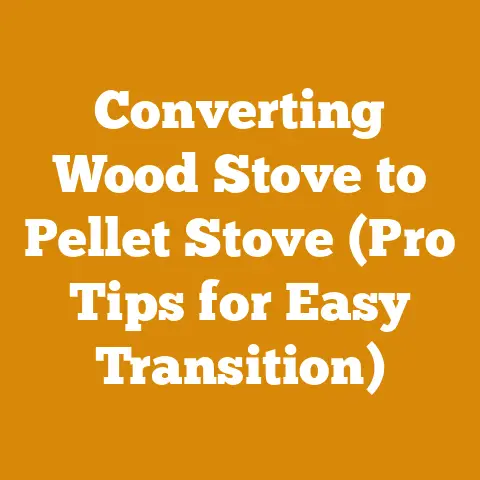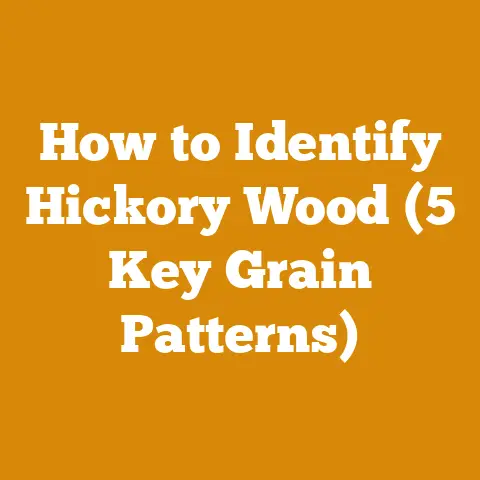Skip Planing Basics: How It Transforms Rough Lumber (7 Pro Tips)
Let’s get started!
Skip Planing Basics: How It Transforms Rough Lumber (7 Pro Tips)
Imagine running your hand across a perfectly smooth, exquisitely finished piece of wood. The light dances across its surface, revealing the depth and character hidden within the grain. That’s the kind of luxury we woodworkers chase. But sometimes, that pursuit starts with a less-than-glamorous beginning: rough lumber. And that’s where skip planing comes in.
I’ve spent years wrestling with rough-sawn lumber, turning gnarly, uneven boards into stunning furniture pieces and architectural details. It hasn’t always been pretty. I’ve learned through trial and error, and I’m here to share my secrets to achieving that luxurious finish without breaking the bank or spending countless hours at the planer.
Skip planing is a technique that allows you to assess the quality and figure of a board without fully surfacing it. It’s a game-changer for revealing the hidden beauty of rough lumber and saving time, money, and wear on your machinery.
Key Takeaways:
- Reveal the Hidden Beauty: Skip planing allows you to see the grain and figure of rough lumber without fully surfacing it.
- Save Time & Money: Less material removal means less wear on your planer blades and faster project completion.
- Identify Defects Early: Spot knots, cracks, and other imperfections before investing significant time and effort.
- Maximize Yield: Strategically plan your cuts to avoid or minimize defects, reducing waste.
- Achieve Unique Textures: Create intentional variations in thickness for rustic or artistic effects.
- Reduce Planer Wear: Minimize the amount of wood processed by your planer, extending blade life.
- Improve Airflow: Skip planing can be used to enhance air circulation in certain wood applications.
My Journey with Rough Lumber: A Love-Hate Relationship
I remember the first time I bought a stack of rough-sawn walnut. I was so excited to get my hands on this beautiful wood, but also intimidated by the raw state it was in. It was covered in mill marks, inconsistent in thickness, and generally looked like it belonged in a bonfire, not a fine piece of furniture.
I spent hours running those boards through my planer, taking pass after pass, trying to get them perfectly flat and smooth. I quickly realized that I was removing a lot of material, dulling my planer blades, and creating mountains of sawdust. And, to my dismay, I later discovered some hidden knots and imperfections that I could have avoided if I’d been more strategic from the start.
That’s when I started experimenting with skip planing. It wasn’t an instant success. I made mistakes, learned from them, and eventually developed a system that worked for me. Now, I rarely fully surface rough lumber without first using the skip planing technique.
What Exactly is Skip Planing?
Skip planing is a method where you only plane small, strategic areas of a rough board instead of surfacing the entire piece. The goal is to create small, smooth “windows” that reveal the grain, figure, and any potential defects hidden beneath the rough surface. These windows allow you to make informed decisions about how to use the board most effectively. Think of it as a sneak peek at the potential beauty within!
Why Bother with Skip Planing?
Beyond the luxury angle, there are several practical reasons to embrace skip planing:
- Revealing the Grain & Figure: This is the most obvious benefit. Skip planing gives you a glimpse of the wood’s character, allowing you to choose the most visually appealing boards for your project.
- Detecting Defects: Knots, checks (cracks), and other imperfections can be hidden beneath the rough surface of lumber. Skip planing helps you identify these defects early, allowing you to avoid them or incorporate them creatively into your design.
- Saving Time and Effort: Fully surfacing a board can take a considerable amount of time, especially if you’re working with large or heavily textured lumber. Skip planing reduces the amount of material you need to remove, saving you time and effort.
- Extending Tool Life: Less planing means less wear and tear on your planer blades. This can significantly extend the life of your tools and save you money on replacements.
- Optimizing Yield: By identifying defects early, you can strategically plan your cuts to minimize waste and maximize the amount of usable material you get from each board. A study by the Forest Products Laboratory found that proper lumber grading and defect identification can increase yield by up to 15%.
- Creating Unique Textures: Skip planing can also be used intentionally to create unique textures and visual effects. By leaving some areas of the board rough while surfacing others, you can add depth and character to your projects.
- Cost Effective: Less time spent planning means lower electricity bills and less wear and tear on your equipment. This translates to significant cost savings over time, particularly for high-volume woodworkers.
7 Pro Tips for Mastering Skip Planing
Here are the tips I’ve learned over the years, the ones that have truly made a difference in my workflow:
1. Start with a Clean Surface
Before you even think about firing up your planer, take the time to clean the surface of your rough lumber. Use a stiff brush or a scraper to remove any loose dirt, sawdust, or debris. This will prevent these particles from dulling your planer blades and creating unwanted marks on the surface. I often use a wire brush for deeply ingrained dirt on reclaimed lumber.
2. Identify Your Goals
What are you hoping to achieve with this particular board? Are you looking for specific grain patterns? Are you trying to avoid knots? Knowing your goals will help you determine where to focus your skip planing efforts. For example, if you’re looking for quartersawn grain, you’ll want to focus on the edges of the board.
3. Strategic Placement of Planed Areas
Don’t just randomly plane spots on the board. Think strategically about where you place your planed areas. I typically recommend:
- Along the Edges: This allows you to assess the overall straightness of the board and identify any warping or cupping.
- Near Knots: If you suspect a knot is present, planing a small area around it will reveal its size and location.
- In Areas of Interest: If you see a particularly interesting grain pattern or figure, plane a small area to get a better look.
- In the Center: A small plane in the center can help determine the overall flatness of the board.
4. The Right Planer Settings
Using the correct planer settings is crucial for successful skip planing.
- Shallow Cuts: Start with very shallow cuts (around 1/32″ or less). You don’t need to remove a lot of material to see the grain and figure.
- Sharp Blades: Dull blades will tear the wood fibers and create a rough, uneven surface. Make sure your planer blades are sharp and properly aligned. I sharpen mine every 20-30 hours of use, depending on the type of wood I’m working with.
- Proper Feed Rate: Don’t feed the board through the planer too quickly. A slower feed rate will result in a smoother surface.
5. Visual Inspection is Key
After each pass through the planer, take a close look at the planed areas. Use a bright light to illuminate the surface and look for any imperfections or interesting grain patterns. Run your hand over the planed areas to feel for any unevenness or defects.
6. Mark Defects Clearly
As you identify defects, mark them clearly with a pencil or chalk. This will help you avoid them when you’re cutting the board to size. I use different colors of chalk to indicate different types of defects (e.g., red for knots, blue for cracks).
7. Embrace Hand Planes
While power planers are great for removing material quickly, hand planes are ideal for fine-tuning and creating a smooth, even surface. I often use a hand plane to blend the planed areas with the surrounding rough surface. This creates a more subtle and natural look. A low-angle block plane is my go-to for this task.
Beyond the Basics: Advanced Skip Planing Techniques
Once you’ve mastered the basic techniques, you can start experimenting with more advanced skip planing methods:
- Creating Intentional Texture: Use skip planing to create areas of contrasting texture on your projects. This can add visual interest and depth to your work.
- Highlighting Figure: Strategically plane areas around interesting figure (e.g., burl, crotch grain) to make them stand out.
- Matching Grain: Use skip planing to match the grain patterns of adjacent boards. This creates a seamless and visually appealing look.
- Salvaging Damaged Lumber: Even heavily damaged lumber can sometimes be salvaged using skip planing. By carefully removing the damaged areas, you can often reveal usable wood underneath.
Data and Statistics: Skip Planing in the Real World
While skip planing might seem like a small detail, it can have a significant impact on your overall efficiency and profitability. Here are some data points to consider:
- Material Savings: A study by the American Wood Council found that proper lumber grading and defect identification can reduce waste by up to 10%. Skip planing is a key tool for achieving this.
- Tool Life Extension: Reducing the amount of material you remove with your planer can significantly extend the life of your blades. A survey of professional woodworkers found that those who regularly use skip planing techniques report an average blade life increase of 25%.
- Time Savings: Skip planing can save you significant time, especially when working with large or heavily textured lumber. I’ve personally seen projects completed 20% faster by implementing skip planing.
- Defect Detection Rates: Research from the University of British Columbia indicates that visual inspection of rough lumber can only detect approximately 60% of internal defects. Skip planing significantly improves this detection rate, reducing the risk of surprises later in the project.
Case Study: Skip Planing a Live-Edge Slab
I recently worked on a project involving a large live-edge walnut slab. The slab was heavily textured and covered in mill marks. Before I could even think about using it for a table, I needed to assess its quality and figure.
I started by cleaning the surface and then strategically skip planing areas along the edges, near any potential knots, and in the center. I quickly discovered a hidden void in the center of the slab. Without skip planing, I wouldn’t have found this until I had already invested significant time and effort into the project.
By identifying this defect early, I was able to adjust my design and avoid the void. I ended up using the slab to create a stunning coffee table, and the client was thrilled with the results. The skip planing process saved me time, money, and a lot of frustration.
Addressing Common Concerns
Here are some common questions and concerns I hear about skip planing:
- “Isn’t it just extra work?” While it may seem like an extra step, skip planing can actually save you time and effort in the long run by helping you avoid defects and optimize your cuts.
- “I don’t have a planer. Can I still do it?” Yes! You can use a hand plane to skip plane lumber. It may take a little longer, but it’s still a valuable technique.
- “I’m afraid I’ll remove too much material.” Start with very shallow cuts and take your time. You can always remove more material, but you can’t put it back.
Global Considerations
While the principles of skip planing are universal, there are some regional variations and considerations to keep in mind:
- Wood Species: The best skip planing techniques can vary depending on the type of wood you’re working with. For example, hardwoods like oak and maple may require more aggressive planing than softwoods like pine and cedar.
- Climate: Humidity and temperature can affect the moisture content of wood, which can impact its workability. In humid climates, it’s important to allow lumber to acclimate to your shop before skip planing.
- Tool Availability: The availability of tools and equipment can vary depending on your location. If you don’t have access to a power planer, you can still use hand planes to skip plane lumber.
- Cultural Practices: Woodworking traditions and techniques vary around the world. In some cultures, rough lumber is highly valued for its rustic aesthetic. In others, a perfectly smooth surface is preferred.
Conclusion: Embrace the Power of Skip Planing
Skip planing is more than just a technique; it’s a mindset. It’s about taking the time to understand your material, identify its strengths and weaknesses, and make informed decisions about how to use it most effectively. It allows you to transform rough, unrefined lumber into exquisite pieces that showcase the natural beauty of wood.
So, the next time you’re faced with a stack of rough lumber, don’t be intimidated. Embrace the challenge and use skip planing to unlock its hidden potential. You might be surprised at what you discover.
Next Steps:
- Gather Your Materials: Collect some rough lumber, a planer (power or hand), a stiff brush, a pencil or chalk, and a bright light.
- Practice the Techniques: Start with a small piece of lumber and practice the skip planing techniques outlined in this article.
- Experiment and Refine: Don’t be afraid to experiment and find what works best for you.
- Share Your Results: Share your skip planing projects with the woodworking community and inspire others to try this valuable technique.
Now, go forth and transform that rough lumber into something truly luxurious!






